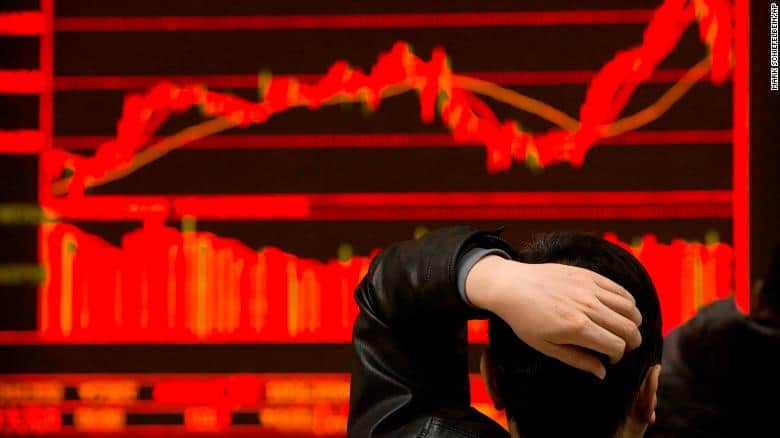
Alarmed investors drove the Dow more than 650 points lower in a shortened trading session on Monday. Markets plunged after the Trump administration sent out confusing signals about markets and the economy.
The S&P 500 fell 2.7% and the Nasdaq was off 2.2%. The Dow, which fell 2.9%, and the S&P 500 suffered their biggest Christmas Eve declines ever.
Stocks initially fell following a statement on Sunday from Treasury Secretary Steven Mnuchin that he had checked on the health of the country’s largest banks.
On Monday, the market recovered by late morning, but then slid even lower after President Donald Trump tweeted: “The only problem our economy has is the Fed.” Investors are concerned that Trump may fire Federal Reserve Chairman Jerome Powell.
Mnuchin on Sunday released an unusual statement to say he had called the CEOs of the country’s biggest banks. He said the executives assured him their banks are healthy and have “ample liquidity” to lend to consumers and businesses. “Markets continue to function properly,” he said.
The major bank CEOs who spoke by phone with Mnuchin were “totally baffled” by the session, according to a person familiar with the call.
“It was totally out of left field and an odd thing to do,” the person said, describing the timing of the call — on a Sunday before markets opened — as strange. All were taken aback by the public nature of Mnuchin’s tweet.
On Monday, shares in JPMorgan Chase (JPM), Wells Fargo (WFC), Goldman Sachs (GS), Bank of America (BAC) and Citi (C) all lost ground.
“This is the type of announcement that raises the question of whether Treasury sees problems that the rest of the market is missing,” Cowen & Co. analyst Jaret Seiberg wrote in a note to clients. “Not only did he consult with the biggest banks, but he is talking to all of the financial regulators on Christmas Eve. We do not see this type of announcement as constructive.”
Mnuchin also convened a call on Monday with the President’s Working Group on financial markets, which includes the chairman of the Federal Reserve and top market and business regulators.
Stocks are on pace for their worst December since the Great Depression. On Friday, the Dow ended its worst week since 2008. The Nasdaq is in a bear market.
After another brutal day on Monday, the Dow is 18.8%, or 5,036 points, off its peak reached on September 20. The S&P 500, also near a bear market, is down 19.8% from its high point October 3. Oil fell more than 6% on Monday to settle below $43 a barrel for the first time since June of 2017.
Adding to investor concerns: The partial shutdown of the federal government will continue at least until Thursday, and possibly into January. Although the closure of some government services isn’t expected to hurt the economy, the inability of lawmakers and President Donald Trump to put politics aside to enact a budget is unnerving to investors.
“The confusion and disorder surrounding this week’s spending debate suggest fiscal deadlines in 2019 — including the debt limit deadline, which we expect to fall between August to October — could be more disruptive than they have been since the 2011-2013 period,” Goldman Sachs economists wrote in a research note.
The stock selloff in part reflects concern about a looming slowdown in economic growth. Investors’ worries were exacerbated last week when the Federal Reserve signaled no slowdown in its plans to continue raising interest rates next year. The market is also reacting to the Trump administration’s trade war with China. The trade war helped knock China’s stock market into a bear market over the summer.
Still, some market veterans argue that a panicky Wall Street is prematurely pricing in a recession that may not hit until 2020.























